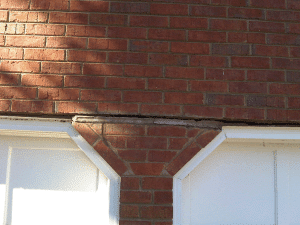Garage Column Settlement Repair – Part 1 – Misnomers
Garage Column Settlement
At Atlas Piers of Atlanta are constantly asked about repairing garage columns, the center column between two garage doors. This article (along with the next one titled “Ways to repair a Garage Column”) will help identify solutions and misnomers with repairing garage columns.
Garage column settlement is normal:
All structures settle. So this is both true and false. The problem arises when your garage column (or any other part of your structure) settles at a faster rate, or continues to settle. Properly constructed garage columns do not continue to settle.

Garage column settlement is not a structural problem:
If it carries a load, it’s a structural problem. All garage columns carry some sort of load from the framing and/or siding of the house. The extent that it carries a load is the question, but yes the garage column is a structural component.
The column is done settling:
Says who? It very well may be done settling, but unless you’ve done extensive soil testing or you are God – chances are you are just guessing that it is done settling. Changes in water drainage, loading or even decomposition of organic debris can change the compaction and bearing capacity of soils. Some columns continue to settle for 20 years after the house was built.
You can just patch the cracks in the brick and it will be fine:
The only thing for certain is that your brick will be patched. You cannot even say that the brick won’t crack again, because if the brick is cracking, it most likely means your column is settling.
I’m sure the builder put a footing or grade beam under my column:
We have fixed hundreds, if not thousands of garage columns over the years. The one thing we know for certain is there is no certainty that your builder built it with a footing. About 50% of the garage floors and columns we repair have some sort of footing.





